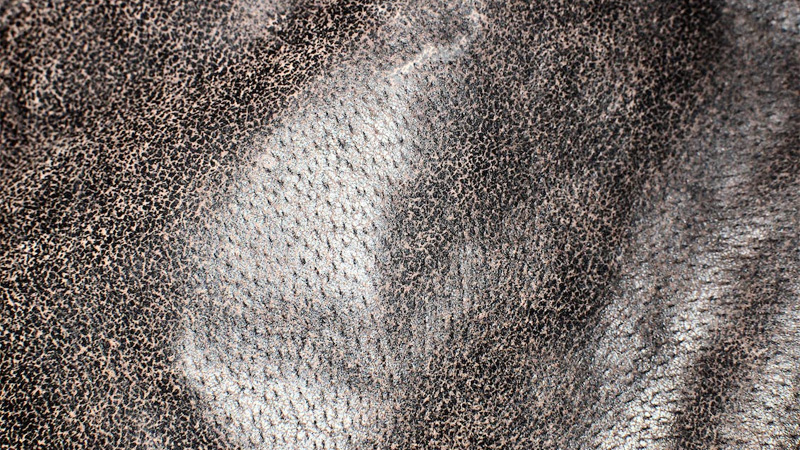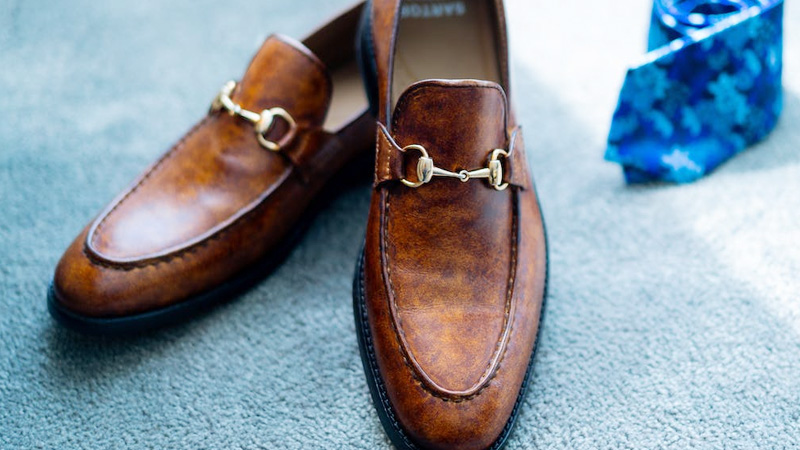Leather, a timeless and versatile material, has long been cherished for its durability and unique character. Yet, an intriguing question often arises: Does leather stretch when wet? Understanding the dynamic relationship between leather and moisture is crucial for anyone who appreciates leather goods.
When exposed to water, leather can indeed undergo a transformation, temporarily becoming more pliable and adaptable.
In this exploration, we delve into the science behind leather’s ability to stretch when wet, examining the role of collagen fibers, hydrogen bonds, and water’s influence.
Additionally, we offer insights into how to prevent excessive stretching, ensuring your cherished leather items maintain their quality and integrity even when faced with moisture.

Does Leather Stretch When Wet?
Yes, leather can stretch when wet. When leather comes into contact with water, its collagen fibers absorb moisture, causing them to swell and become more pliable.
This increased flexibility allows the leather to temporarily change shape and stretch. However, it’s essential to note that excessive stretching when wet can damage the leather.
Therefore, if you need to stretch leather when wet for a specific purpose, do so with caution and ensure proper drying and conditioning afterward to maintain its quality and prevent issues like brittleness or cracking.
Why Does Leather Stretch When Wet?
Leather stretches when wet primarily due to the interaction between water and the collagen fibers that make up leather’s structure.
Here’s why leather stretches when it becomes wet:
Collagen Fiber Structure
Leather is primarily composed of collagen fibers. These fibers are tightly woven and provide leather with its natural strength and rigidity.
Hydrogen Bonds
The key to understanding why leather stretches when wet lies in the hydrogen bonds that hold collagen fibers together. Hydrogen bonds are relatively weak electrostatic attractions that help maintain the stability of the collagen structure.
Interaction With Water
When leather comes into contact with water, water molecules infiltrate the spaces between the collagen fibers. Water is effective at disrupting hydrogen bonds.
As water molecules interact with the hydrogen bonds in the collagen fibers, they temporarily weaken and, in some cases, break these bonds.
Increased Pliability
As the hydrogen bonds within the collagen fibers weaken due to the presence of moisture, the leather becomes more pliable and less rigid. This change in structural properties leads to increased flexibility, allowing the leather to stretch and conform to new shapes.
Conforming to Shape
Wet leather can be molded and stretched more easily. This property is particularly useful for creating leather products that need to fit precisely, such as shoes or gloves.
When subjected to stretching forces or when worn against the body, wet leather can adapt and conform to the desired shape.
Thermal Expansion
Water absorption can also cause a slight expansion in the leather’s dimensions. This expansion further contributes to the stretching effect when the leather dries.
How Can You Prevent Leather From Stretching When Wet?

Preventing leather from stretching when it gets wet is a common concern, as leather’s ability to stretch in response to moisture is inherent to its composition.
While you can’t completely eliminate the potential for stretching, you can take several steps to minimize it and preserve your leather items:
Pre-treatment With Waterproofing Products
To safeguard your leather items from moisture-related stretching, begin by pre-treating them with a reputable waterproofing or leather protector product.
These formulations create a protective shield on the surface of the leather, diminishing its capacity to absorb water. Regularly reapply these products to maintain the protective barrier, following the manufacturer’s guidelines for best results.
Leather Conditioner With Water Repellent Properties
Select leather conditioners that not only nourish and maintain the leather’s suppleness but also possess water-repellent properties.
These conditioners serve a dual purpose by keeping your leather items hydrated and resilient while discouraging excessive water absorption, reducing the likelihood of stretching.
Avoid Full Submersion
Whenever possible, exercise caution to prevent full submersion of your leather belongings in water. Minimize their exposure to wet conditions, and if they do get wet, act swiftly to limit the duration of exposure and the amount of moisture they absorb.
Prompt Drying
Should your leather items become damp, prioritize prompt drying as the next preventive measure. Employ a clean, dry cloth to gently blot away any excess moisture.
Refrain from using artificial heat sources, such as hairdryers or radiators, which can cause leather to become brittle. Instead, allow the leather to air dry naturally in a well-ventilated area.
Stuffing and Shaping
For leather items like shoes or bags that have incurred moisture, employ a strategic approach to maintain their shape. Insert newspaper or suitable shoe trees to help them retain their form as they dry.
Periodically reshape the leather while it’s still damp to avert any potential distortion.
Professional Care
For particularly valuable or delicate leather possessions, consider seeking professional care from a specialist in leather care and restoration.
These experts possess the knowledge, skills, and specialized equipment necessary to assess, clean, and treat leather items that have been exposed to moisture effectively.
Regular Maintenance
Implement a regular maintenance regimen for your leather items. Ensure they receive routine cleaning and conditioning with appropriate leather care products.
Adhering to the manufacturer’s recommendations or seeking guidance from a leather care professional can help maintain the leather’s resilience and reduce its susceptibility to stretching.
Proper Storage
The final step in preventing leather stretching when wet involves proper storage. Store your leather belongings in a cool, dry environment, away from direct sunlight and moisture.
Avoid placing them in damp basements or humid spaces, as these conditions can increase the risk of stretching and damage over time.
Does Leather Stretch Over Time?
Yes, leather can stretch over time due to factors like regular usage, body heat and moisture, natural aging, and external forces. Leather items are designed to be flexible and adapt to their user or the way they are used.
This gradual stretching can lead to a more comfortable fit and a personalized shape but may also result in excessive stretching if not properly cared for.
Regular maintenance and proper storage can help minimize excessive stretching and extend the longevity of leather products.
FAQs
Is there a specific type of leather that stretches more when wet?
Generally, all types of leather have the potential to stretch when wet, but the degree of stretching may vary depending on factors such as the leather’s thickness, quality, and finish.
Can leather stretching when wet cause permanent damage to the material?
While leather can stretch when wet, it typically returns to its original shape as it dries. However, excessive stretching or repeated exposure to moisture without proper care can lead to permanent damage, including deformation and loss of strength.
What is the best way to dry leather after it gets wet to prevent excessive stretching?
The best way to dry wet leather is to allow it to air dry naturally at room temperature. Avoid using direct heat sources like hairdryers or radiators, as they can cause the leather to become brittle.
Can leather that has stretched when wet be restored to its original shape?
Leather that has stretched when wet can often be reshaped to some extent as it dries. However, for more significant adjustments, it’s advisable to consult a professional leather care expert.
Are there any specific leather care products that can help minimize stretching when wet?
Leather conditioners with water-repellent properties can help reduce the absorption of moisture and, to some extent, minimize stretching when wet. These products should be applied regularly to maintain leather’s resilience.
To Recap
The inquiry into whether leather stretches when wet has unveiled a captivating interplay between this timeless material and the influence of moisture.
We have uncovered the scientific mechanisms that govern leather’s flexibility and pliability in response to water, shedding light on the role of collagen fibers and hydrogen bonds.
However, it is crucial to approach this phenomenon with care, as excessive stretching can potentially damage leather.
To preserve the quality and longevity of leather items, we emphasize the importance of proper care, including waterproofing, cautious stretching, prompt drying, and routine maintenance.
While leather may undergo temporary transformations when exposed to moisture, its enduring allure and strength remain undiminished.
With a deeper understanding of this relationship, we can continue to cherish and appreciate leather for its timeless beauty and enduring resilience.
Leave a Reply